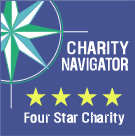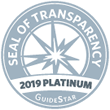 Presented by Kenneth D. Burman, MD
Presented by Kenneth D. Burman, MD
American Thyroid Association
Annual Business Meeting
The Breakers Hotel
Palm Beach, Florida
Thursday, September 24, 2009
It has been a distinct honor and privilege for me to serve as your President and to work with the Board of Directors, Executive Committee, Committee Members and ATA members. This year has represented the highlight of my professional career.
The ATA has been involved in numerous activities; I will try to briefly highlight several salient areas that we have focused on within the last year. We had a successful National Thyroid Cancer Workshop in Miami Beach in January, 2009; the program committee included Drs. Kloos, Mazzaferri, Doherty, Lee, Mandel and Sherman. In Washington, DC in April, 2009 the ATA Spring Research Summit, focused on “Thyroid Hormone in Pregnancy and Development” and the Spring Symposium focused on “Thyroid Dysfunction and Pregnancy: Miscarriage, Preterm Delivery and Decreased IQ”. Both of these meetings were successful and I would like to publicly thank Drs. Brent, Pearce and Stagnaro-Green for chairing these sessions. For the first time, on April 18, 2009 the ATA and FDA cosponsored a joint meeting with the FDA focusing on the use of antithyroid medications. This conference was conceived and formulated by Dr. David Cooper and was embraced by the ATA Board. This conference has resulted in preliminary recommendations from the FDA in an Alert dated June 4, 2009 stating that there is a risk of serious hepatic injury with the use of PTU in the treatment of hyperthyroidism. The FDA recommended that PTU be considered a second line agent except in patients who are pregnant, allergic to or intolerant of methimazole. Such a combined conference represents an optimal cooperation between the ATA and governmental agencies that can directly result in enhanced patient care, as well as increased visibility for the ATA. At this annual meeting the ATA is sponsoring a meeting with ITOG, with participation by the FDA, regarding the design and implementation of thyroid cancer clinical trials. This meeting should have important ramifications regarding thyroid cancer protocols and the mechanisms by which novel treatments become available for clinical use. Ms. Adonia Coates, Dr. Robert Gagel, Dr. Robert Kane and Dr. Mike Tuttle have been instrumental in making this symposium successful.
The present ATA Annual meeting represents an excellent mixture of clinical and basic science. Dr. Matthew Ringel and Dr. Kathryn Schuff and their program committee have worked diligently in organizing this meeting, especially in attempting to invite superb speakers from fields outside of Thyroidology to shed light on basic techniques or issues that may have thyroid related applications.
One of the most important functions of the ATA, I believe, is the development of Thyroid Related Guidelines. These Guidelines directly influence patient care, but have the added benefit of promulgating the name and concepts of the ATA. We recently have published Differentiated Thyroid Cancer Guidelines, chaired by Dr. David Cooper and Medullary Thyroid Cancer Guidelines, chaired by Dr. Rick Kloos. I would like to thank these individuals and their committee members who evaluated the literature and derived evidence based guidelines. I am also grateful to Dr. Peter Kopp and his Guidelines Committee.
I was extremely gratified to observe at recent International Meetings in Toronto and Lisbon that these guidelines were extensively discussed and evaluated and were held as the evaluation and treatment paradigm for these diseases. Consonant with these principles, the ATA has formed committees to develop guidelines as follows. Pediatric Thyroid Cancer, chaired by Dr. Gary Francis; Pregnancy and Thyroid, chaired by Dr. Alex Stagnaro-Green; Anaplastic Thyroid Cancer, chaired by Dr. Robert Smallridge; and Basic Science Thyroid Techniques, chaired by Dr. Tony Bianco. I am extremely grateful for these individuals and their committee members for accepting these positions.
I would also like to thank our editors: Dr. Charles Emerson, Editor of Thyroid, for his leadership and innovations of our journal. The journal not only has succeeded in attracting and publishing high quality scientific and review articles, but Dr. Emerson has cooperatively worked with the ATA Board in areas of mutual interest. We are very proud that our recent Guidelines have been published in Thyroid. Dr. Ernie Mazzaferri, EIC of Clinical Thyroidology, which is now publishing monthly online, has done an excellent job of finding articles from the literature and of raising important relevant issues. Dr. Alan Farwell, EIC of Clinical Thyroidology for Patients is appropriately expanding our online services to patients.
Each President has a major focus for his or her tenure at the ATA. I decided to focus on Strategic Planning, concentrating on what The Board considered the most critical challenges in the future. In the words of Yogi Berra “If you don’t know where you are going, you will wind up somewhere else”. It seems especially important in these financial times for the ATA to have well conceived and feasible strategic plans so we can succeed and flourish as an organization regardless of the daunting challenges. Accordingly, I have taken the Strategic Planning initiative as a major focus of my Presidency and I thought it would be worthwhile to briefly inform you regarding our process and plans in this arena.
We are focusing on four major strategic plan initiatives in the areas of Infrastructure, Education and Meetings, Finance and Development, and Other Future Issues, such as membership growth, society functions such as guidelines, and awards. The derived recommendations will soon be available for member comments. With regard to infrastructure, the office has expanded utilization of current space, the functions of 26 committees and task forces were specifically reviewed, a half time CFO has been hired, and an Ethics Committee has been formed to advise the Board on relevant issues and policies. The Education and Meetings Subcommittee agreed that recruitment of young active members is the quintessence of the organization and efforts are being expended to enhance their access to and integration into ATA activities, including lower costs for attending meetings. Under the leadership of Dr. Vic Bernet, Chair, Internet Communication Task Force, there is now a Fellows’ Corner on the ATA website which contains relevant clinical and administrative information for Trainees. The Finance and Development Subcommittee is considering the development of a Corporate Board comprised of ATA members and Corporate Members and is considering engaging in wider interaction with various endocrine related industry representatives ,for example, ., ultrasound machine manufacturers, pharmaceutical companies, oncologic focused companies. The future Issues subcommittee discussed the philosophy of membership growth and was in favor of considering expanding ATA membership by approximately 20-30%, which, hopefully, will maintain its collegial atmosphere but allow for wider participation. The subcommittee favorably considered increased interaction with related societies that have mutual interests to ours. For example, we are now part of the World Thyroid Congress, a newly formed organization that has expanded the International Coordinating Committee.
Of course, none of the initiatives I have mentioned could have been accomplished without the full support of the Board. The Board members give a significant amount of their time and are dedicated to the ATA. It must also be mentioned that our initiatives have taken place in the context of unprecedented changes in the national and global economy. The Board and ATA office, and in particular, Dr. Kloos, Dr. Sarne and Ms. Smith, have thoroughly evaluated and refined our financial obligations and have judiciously maintained projects seminal to the ATA and appropriately parsed non critical functions. The ATA is profoundly indebted to their financial stewardship.
I am indebted to numerous individuals for their invaluable dedication and assistance. Bobbi Smith and Rick Kloos are really the backbone of the ATA; I would like to thank them both. They are knowledgeable, prudent and excellent shepherds of the ATA office and finances. In addition, they are always available and are a pleasure to work with. There are too many other individuals to comment on in detail, but I would like to publicly thank Adonia Coates and Jared Hoke. Dr David Sarne is a superb Treasurer, and Dr. Rebecca Bahn, the immediate past president has been very gracious and helpful. The ATA will be in excellent hands with the incoming President, Dr Terry Davies.
I would like to take this opportunity to thank several friends and colleagues with whom I have worked over the years and who have played an instrumental part in my career. Dr. Victor Bernet and Dr. Hank Burch have been loyal friends, advisors and colleagues. Drs. Jim Baker, Matt Ringel, Bob Smallridge and Doug Van Nostrand have also been trusted friends who have contributed and continue to contribute significantly to the ATA and to clinical and research Thyroidology. I would also like to extend my personal gratitude to Dr. Leonard Wartofsky for his continued advice and encouragement. I first met Dr. Wartofsky in 1972 and we have worked together now for 37 years. He has always demonstrated excellent judgment, innovative ideas, and collegiality. His support of my career has directly led to any success I might have had. Thank you, Len. I would also like to thank my wife Molly for her unwavering support and also the support of my five children.
Lastly, I would like to personally thank each member of the Board, each committee member and each ATA member for their enthusiastic support and active participation in all of these activities. The ATA was founded in 1923 and has continued to flourish now 86 years later. I am certain that with the fundamentally sound economic plan being formulated, in the context of a detailed, relevant strategic plan which hopes to preserve and expand issues the ATA considers critical, that the ATA will continue to support physician and patient education, research and relevant clinical and administrative issues in a collegial, supportive manner for many decades in the future. Thank you.





